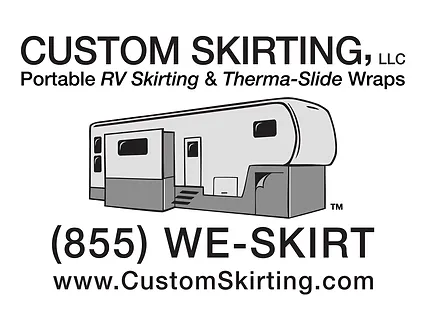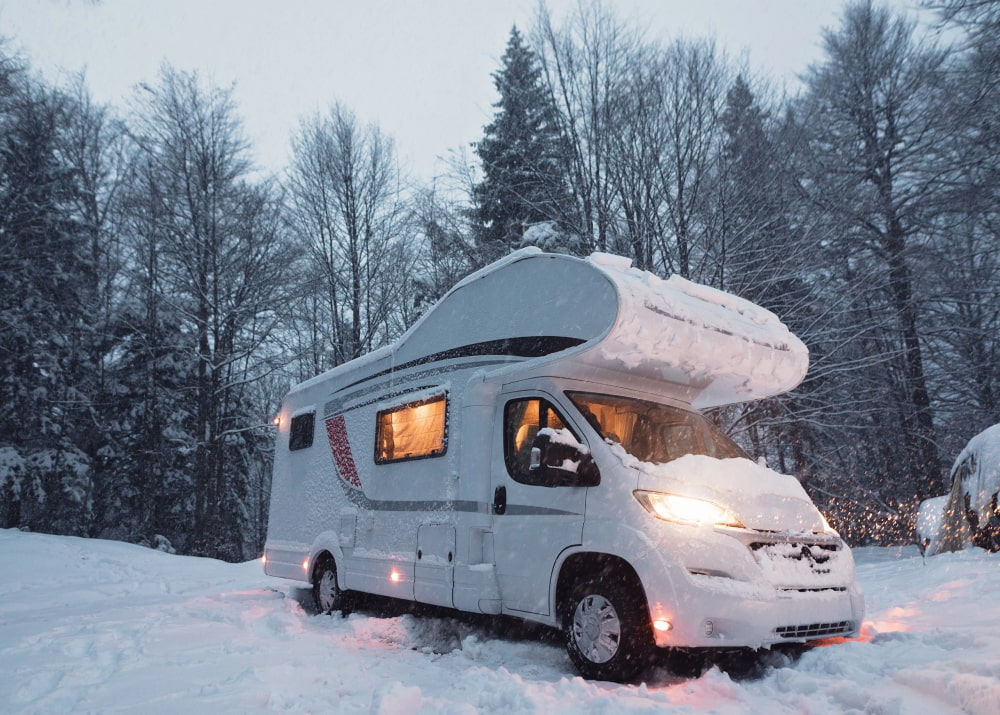
Living in an RV During the Winter: 5 Tips & Tricks
Table of contents
As the chilly winds of winter approach, embracing the adventure of living in an RV during the cold weather months is both thrilling and challenging. For those intrepid souls embarking on winter RV camping, armed with a winterized camper or a winter travel trailer, the frosty beauty of the outdoors comes hand in hand with unique challenges. Navigating the icy terrain while keeping your RV cozy and functional demands a specific set of skills and knowledge. In this insightful article, we’ll delve into the art of winter RV living, providing you with invaluable tips and tricks to make your cold-weather RV experience not only survivable but genuinely enjoyable.
From mastering the intricacies of winterized campers to understanding the nuances of winter RV camping, join us as we unlock the secrets to staying warm, comfortable, and worry-free while living in an RV or travel trailer amidst the winter wonderland. Whether you’re a seasoned winter traveler or a newcomer to the world of cold-weather RV adventures, this guide is your essential companion for embracing the beauty of winter while on the road.
Is it possible to Live in an RV During the Winter?
It is entirely possible to live in an RV/travel trailer or go camping during the winter. However, it does come with its own set of challenges. RVs, even those equipped with heating systems, are not as well-insulated as permanent homes. Therefore, staying warm and comfortable in winter conditions requires careful planning and preparation. Proper insulation, weatherproofing, and adequate heating systems are essential. Many RVers invest in skirting to protect the underside of the RV and prevent heat loss. Additionally, utilizing heated hoses, insulating windows, and draft stoppers can significantly improve the RV’s ability to retain heat. With the right equipment, knowledge, and preparation, living in an RV during the winter months can be a rewarding and adventurous experience.
How Cold Is Too Cold for Winter RV Living?
Navigating the world of winter RV living is a complex task, hinging on a blend of factors: the RV’s insulation quality, the efficiency of its heating system, and the comfort threshold of its occupants. However, there’s a fundamental guideline regarding the tolerable coldness level for winter RV living.
When temperatures consistently plummet below freezing (32°F or 0°C), winter RV living becomes notably challenging. These frigid conditions significantly heighten the risk of frozen pipes, tanks, and essential RV systems. RVs are not inherently equipped to endure prolonged periods of extreme cold without robust insulation and effective heating mechanisms. Thus, a dependable heating system and ample insulation are vital to maintaining the interior temperature above freezing.
For RVers intending to brave exceedingly cold climates, investing in specialized winterization equipment is imperative. This includes heavy-duty insulation, Custom RV Skirting, heated hoses, and advanced heating systems tailored for sub-freezing temperatures. Regular weather monitoring and proactive steps, like allowing faucets to drip to maintain water flow, are crucial preventive measures.
Ultimately, determining the threshold of tolerable coldness for winter RV living is contingent upon the RV’s insulation quality, its heating capabilities, the level of preparedness, and the occupants’ resilience to cold weather. Careful evaluation of these factors and proactive precautions are paramount to ensuring safety, comfort, and warmth during winter RV living adventures.
Tip 1: Add a Small Heater
If you are going to be spending the winter in the deep freeze (North Dakota, Wyoming, Colorado, etc.) you would be well served to put a small electric heater under your travel trailer and inside the RV skirting. Just having it under your RV and being able to plug in and turn it on is a huge help and here is a small list of things to keep in mind with this tip:
1. For the best results you will want to glue or screw (carefully) the heater to a piece of plywood or particle board. The reason for this is that many electric heaters have a safety switch that will turn the heater off when you trip on the cord and knock it over. This is good if you have it in your house and bad if you wake up to frozen pipes.
2. This sort of goes without saying, but… make sure that the heater is placed near your water pipes. This is usually towards the back of the trailer and will help keep them from freezing.
3. DO NOT USE A PROPANE HEATER! These can cause a build-up of carbon monoxide in your travel trailer and can be extremely dangerous during the winter!
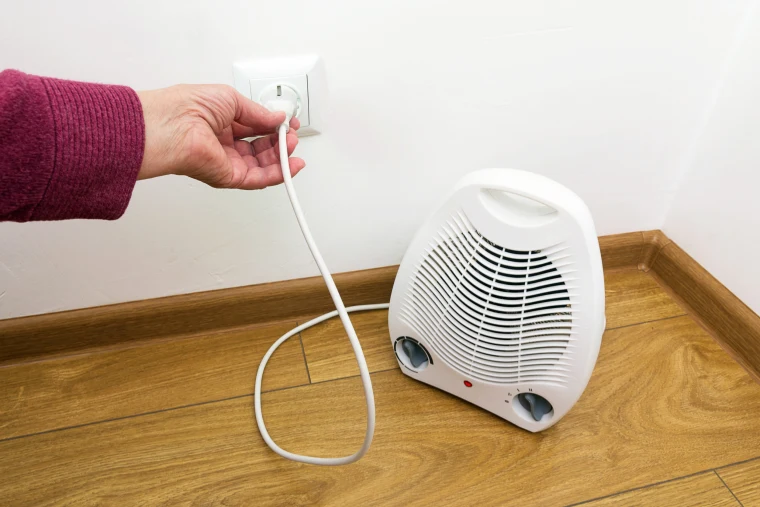
Tip 2: Dehumidifier
A common problem when staying in an RV for the winter is ice accumulating on your windows. It is amazing that you can be warm and comfortable in the RV And have two inches of ice on your windows. This phenomenon is not only annoying but can be bad for your windows. This is illustrated well by this guy’s video:
What is happening is that the humid air you breathe out comes in contact with the freezing window and it immediately freezes. The best way we have found to combat this is to decrease the humidity in your camper using a dehumidifier.
This one is made for RVs and while it might not completely eliminate the problem, it significantly decreases the problem.
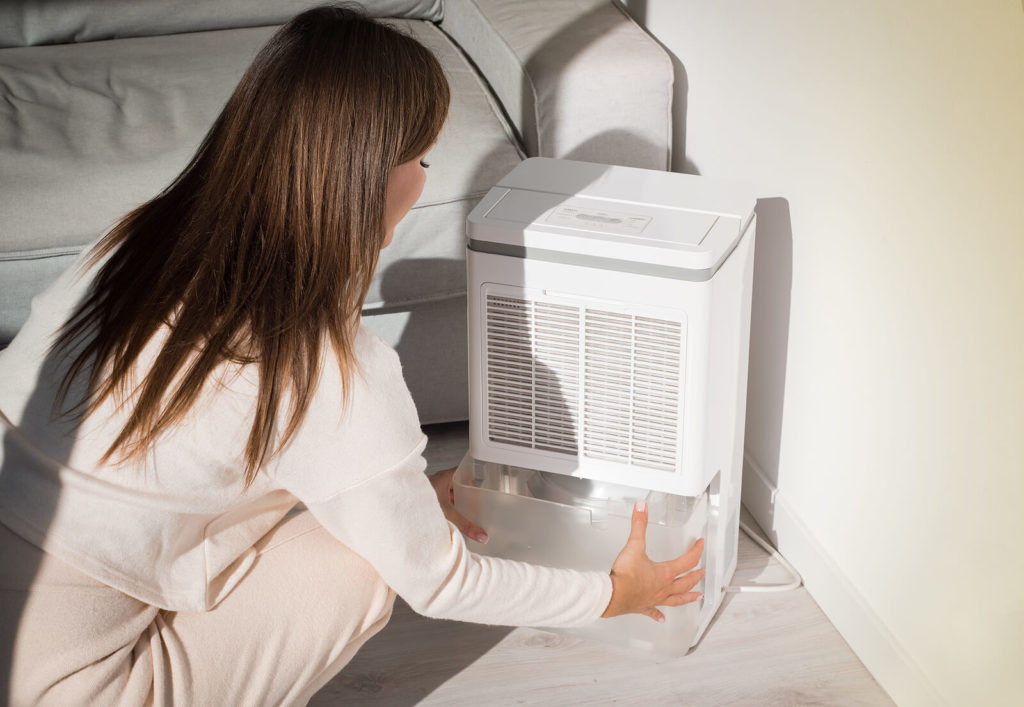
Tip 3: Heated Bed Covers
This one may sound like a luxury but after a long winter day, it can be a sanity saver, it’s called a heated bed cover.
They come in a variety of sizes and HIGHLY recommend dual temperature control. If there is one place you should be happy, and get what you want, it should be in bed.
Tip 4: RV Skirting
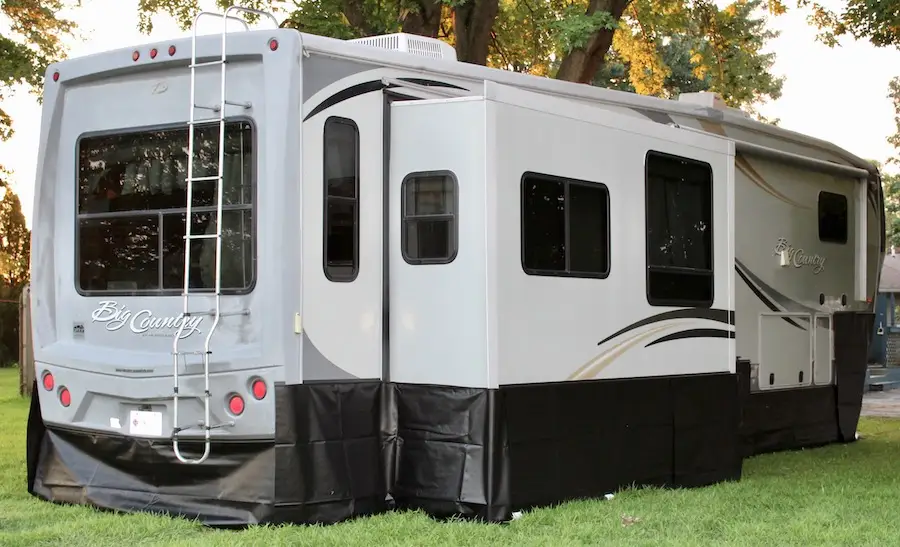
Yes, this is what we do, and yes, it is almost universally agreed upon that you need it!
Some people do opt to forgo the skirting and live with frozen pipes, no running water, and freezing cold floors. Yes, the floors will get cold. From our experience, even 3 wool socks and slippers will not stop the heat from being pulled from your feet and turning your toes into icicles.
We do offer a unique system and would be happy to give you a free quote over the phone (855) WE SKIRT.
Tip 5: Heated Water Hose
The skirting will keep your tanks from freezing but you are going to need to be able to get the water to your winterized camper.
There are a variety of heated hoses to choose from but most don’t add any heat line to wrap your brass fittings and keep the connections from freezing. We have remedies for that problem with an additional heat line to wrap the attachment.
Also, many hoses you have to turn off when summer comes around or the excess heat will melt your hose. We have a thermostatically controlled hose that will keep you flowing all winter and will automatically turn down the temperature when summer comes around to save the hose and money on the electric bill.
Gear Up for Your Winter RV Adventure With Custom Skirting!
While you explore the beauty of winter while camping in your RV, ensure you’re equipped with the best RV skirting in the market. Don’t settle for anything less than perfection. At Custom Skirting, we take pride in our meticulous on-site custom-tailoring, ensuring your RV is snugly wrapped with our exclusive “No-Snap, No-Gap” channel system. Say goodbye to worries about water, snow, and wind – our skirting stands firm against the harshest winters, tested rigorously across the northern United States and Canada. Experience the quality and convenience you deserve. Upgrade your RV with Custom Skirting today, and let your winter adventures be warm, cozy, and worry-free.
Don’t wait – embrace the cold with confidence, but don’t procrastinate! Our calendar for orders start feeling up starting in August.
